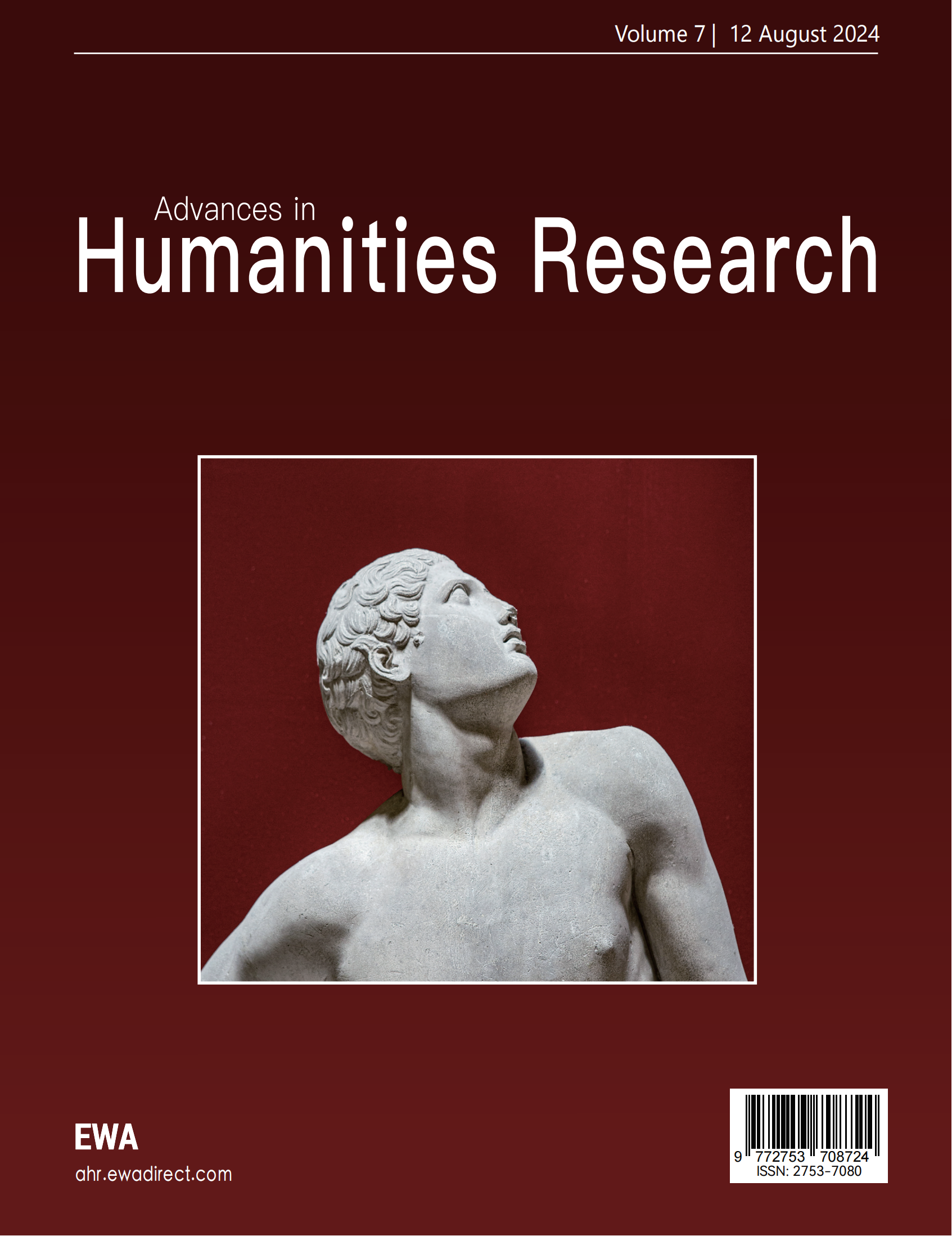1 Introduction
With the continuous development of globalization, cultural tourism has gradually become an important direction for the tourism industry. As a city with a profound historical and cultural heritage and a blend of diverse cultures, Macau boasts a unique music culture characterized by a variety of musical genres. Music, as a universal language, plays a significant role in cultural transmission. However, the public’s understanding of Macau’s music culture is currently limited, facing issues such as limited dissemination and lack of interactivity. When thinking of Macau tourism, people’s impressions are almost exclusively focused on the gaming industry. Therefore, researching the communication strategies for spreading its music and the historical culture behind it holds significant reference value for enhancing the city’s image and promoting the development of the cultural tourism industry.
Currently, the main methods of disseminating Macau’s music culture include hosting large-scale events such as music festivals and concerts, and featuring musical performances at tourist attractions and hotels. “City Walk,” a rising travel method globally, differs from traditional travel methods by emphasizing in-depth experiences of the destination city’s unique features and culture, including its music culture. As a vibrant and multicultural city, Macau can combine this new travel method with interaction design to provide an effective strategy for the dissemination of its music culture.
This paper uses the interaction design of “City Walk” as an example to explore how to innovate Macau’s music culture communication model through interactive platform design. First, by reviewing and summarizing the history, characteristics, and value of Macau’s music culture, we can understand its cultural heritage and contemporary value. Second, by conducting practical research on “City Walk,” we can understand its usage and feasibility in this research field. On this basis, we design an effective interactive solution for “City Walk” to promote the dissemination and protection of Macau’s music culture. Furthermore, through collecting and analyzing user feedback in the form of questionnaires, we evaluate whether this design effectively conveys Macau’s music culture and whether this conveyance enhances tourists’ understanding and appreciation of Macau’s music culture.
This design aims to protect and inherit Macau’s music culture, expand its dissemination range, and enhance its cultural confidence and soft power. On the other hand, it provides tourists with a new cultural experience, promoting the upgrade and transformation of Macau’s tourism industry. This is expected to offer new ideas and methods for the protection of Macau’s music culture and the development of its tourism industry. Additionally, the study results will summarize the experiences and potential issues of the interaction design process, providing valuable references for the future dissemination of music culture in Macau and other regions.
2 Literature Review
Through reviewing relevant literature, I found that existing scholars mostly explore the relationship between music and tourism, the design of interactive software for tourism, the concept of urban micro-tourism, and individual studies on Macau’s music culture from perspectives such as tourism studies, cultural heritage protection, and musicology. Analysis reveals that the research field of interactive software design for travel guides applied to cultural dissemination is already in use, but no scholars have explored how to combine tourism interactive software with music culture. As a unique tourist city, Macau has yet to see research on its tourism interactive software and few scholars focus on the relationship between the dissemination methods of its music culture and digital technology. Therefore, the literature review is divided into four parts to explore the current state of previous research and its impact on this study’s design.
2.1 Macau’s Music Culture and Its Dissemination
Macau’s music culture can be traced back to the 16th century when missionaries landed in Macau and established the first Western-style school in the Far East, the St. Paul School, which is the predecessor of the “Ruins of St. Paul’s,” one of Macau’s most iconic tourist attractions. Given Macau’s history with Portugal, Western music indeed entered China through Macau in the early days, making Macau one of the earliest origins of Western music in modern China. The Portuguese brought organs, brass instruments, dulcimers, Catholic music, choral music, and some Western music theories to Macau. The missionary Matteo Ricci took these musical elements inland, while missionaries also sent Chinese musical instruments such as the sheng (a reed instrument) and Zhu Zaiyu’s 12-Tone equal temperament from Macau abroad. Regarding the strategies for disseminating Macau’s music culture, the most notable is the Macau government’s initiation of the International Music Festival in 1987. The Macau International Music Festival has since become a window showcasing the phenomenon of cultural fusion between East and West in Macau, significantly impacting the dissemination of Macau’s music culture [1]. These historical measures demonstrate the unique dissemination value of Macau’s music culture throughout history. However, the content of the Macau International Music Festival mainly introduces excellent music from around the world and thus cannot fully serve as a carrier for showcasing Macau’s music culture.
Today, Macau’s music is categorized into ritual music, folk music, art music, and entertainment music [2].
From the perspective of ritual music, Macau, as a place where East meets West, includes Catholic music as well as Mazu worship, Na Tcha worship, Buddhist, and Taoist beliefs, all of which have become Macau’s intangible cultural heritage. Tourist attractions like the A-Ma Temple, a popular cultural tourism site, also have cultural music worth noting, such as Mazu music. Additionally, the organ found in St. Dominic’s Church, regularly held Catholic music, and Macau’s intangible cultural heritage Taoist ritual music, all bear witness to the integration of Macau’s music culture with tourist attractions. Therefore, combining Macau’s music with tourism can allow the public to understand Macau’s music culture during their travels, thus achieving its dissemination purpose.
From the perspective of folk music, as Macau is located in a coastal area bordering Guangdong, it also has Guangdong folk music varieties such as Cantonese opera, saltwater songs, Cantonese tunes, eight-tone gongs and drums, and southern tunes. There is also Macanese folk music from the Portuguese who settled in Macau. These music forms appear in various community groups on Macau’s streets and at various events hosted in Macau, such as the Lusofonia Festival and the Tap Seac Craft Market. These events attract tourists to Macau annually, and through participating in these activities, visitors can appreciate the distinctive Macau music culture. Therefore, integrating Macau’s tourism interactive software with its music culture can achieve the dual goals of disseminating Macau’s music culture and promoting the development of Macau’s tourism industry.
From the above analysis, it can be seen that Macau’s music culture originated in the 16th century with the arrival of the Portuguese. This period marked the early stages of Macau’s music culture history, culminating with the closure of the St. Paul School, which left a significant mark on Macau’s early music culture. This historical introduction is often included in the descriptions of the “Ruins of St. Paul’s” tourist attraction. This history shows that Macau’s music culture achieved the value of East-West cultural exchange through its dissemination, highlighting the importance of Macau’s music culture dissemination. With the development of society and the passage of time, Macau has gradually integrated musical elements from European countries such as Portugal, Spain, and Italy with traditional Chinese music and local music culture, forming today’s unique Macau music culture. The most significant feature of Macau’s music is the blending of diverse cultures. In Macau’s music, tourists can hear European classical music, Portuguese folk music, traditional Chinese tunes, and musical elements from other countries like India and Brazil. This multicultural integration makes Macau’s music culture uniquely charming, providing tourists with a distinctive cultural experience. These cultural elements add a rich regional flavor to Macau’s music. In addition, tourists can learn about many unique instruments within Macau’s music culture. These include traditional Chinese instruments such as the sheng, erhu, and flute, Portuguese folk instruments like the Portuguese guitar and drums, and Western instruments like the organ. Visitors might see various wind instruments, plucked instruments, and instruments similar to the suona carved on the “Ruins of St. Paul’s” facade, hear Catholic choral music and learn about Macau’s first organ at St. Dominic’s Church, or experience Portuguese folk songs and dances during local festivals and carnivals. Thus, tourists can gain a vivid understanding of Macau’s omnipresent music culture through the guidance of a mini-program during their travels. Moreover, Macau’s classical music, folk music, pop music, opera, and other musical genres are continuously being inherited and developed, becoming an indispensable part of Macau’s music culture. However, while these music forms are popular within Macau, they are challenging to disseminate beyond the city.
Currently, the dissemination of Macau’s music culture mainly relies on the Macau International Music Festival, local music education, and promotional collaborations with the Cultural Affairs Bureau, the Tourism Bureau, and major resorts. There is no research on dissemination through digital integration. Therefore, this study emphasizes using urban micro-tourism, a new form of tourism, to systematically and comprehensively spread Macau’s music culture. By introducing Macau’s music culture through interactive music experiences and creating music-themed travel routes, the study aims to give tourists a deeper understanding and appreciation of Macau’s musical charm. Hence, the music dissemination strategies for designing Macau music tourism interactive software will focus more on comprehensiveness, systematicness, and personalization.
2.2 Music Tourism
In recent years, music tourism, as an emerging form of cultural tourism, has gradually gained attention in the academic community. Most research focuses on the development trends and hotspots of music tourism, including the integration of music tourism with cultural and creative industries, the protection and development of cultural heritage in music tourism, and the marketing and promotion of music tourism. Unique local music resources are crucial tourism assets that cannot be overlooked. As more tourists are willing to pay for the culture of their destinations, developing distinctive local music resources can attract more visitors, thereby boosting the local tourism industry [3]. Furthermore, some scholars suggest that future music tourism should focus on integrating with high-tech industries, establishing a new music tourism promotion system based on the “Internet+” concept, and promoting the development of ethnic music tourism, cultural music tourism, festival tourism, stage music tourism, and heritage music tourism. Drawing on the successful experiences of developing music tourism domestically and internationally can further promote the growth of music tourism [4].
In summary, research on the development of music tourism in China has made considerable progress in recent years. It has been noted that music tourism can enhance the dissemination of local music culture and stimulate the development of the cultural tourism industry. Moreover, future music tourism needs to integrate with high-tech industries. Therefore, this study will focus on disseminating Macau’s music culture through interactive design.
2.3 “City Walk” Urban Micro-Tourism
The concept of “City Walk” originated from “London Walks” in London, England, translated into Chinese as “城市漫步” (urban strolling). It refers to casual wandering or exploring specific scenic routes within a city, allowing for an in-depth experience of the city’s history, culture, and landscapes in a non-random and purposeful manner. The rise of urban roaming-style travel reflects the insufficiency of traditional sightseeing to meet modern tourism demands. People now seek more diverse travel experiences, unconsciously pursuing more profound and warm high-quality tourism experiences. Immersive city walks allow individuals to deeply integrate into the city, expanding the scope of tourism beyond traditional attractions [5]. The social aspect is a primary function of city walks. Participants mainly use social platforms to share city walk routes, street photography collections, and check-in points for popular spots. There are both organized activities by specific organizers and group tours for individual travelers seeking companions. From online discussions to offline gatherings, all participants have the opportunity to meet new friends during city walks. Along the way, popular landmark brands and merchants can also achieve consumer monetization [6].
From the above analysis, it is evident that city walks, as a popular contemporary travel method, offer cultural experiences and social interactions. They emphasize the exploration of local culture, and their social nature enhances the social function of this design. Through user sharing, others can learn more about Macau’s music culture. Macau, with its rich cultural heritage and walkable attractions, is well-suited for this type of travel. This unique and richly experiential travel method is widely welcomed by tourists.
2.4 Interactive Travel Design
From the perspective of the overall tourism service system, effective cultural transmission must occur within a context of excellent overall service experience. It should be usable, efficient, desirable, and useful. The evaluation criteria for this include ten dimensions: aesthetic appeal, cognitive ease, adaptability to needs, pleasant methods, desire for participation, low carbon inclusivity, evident benefits, sustained impact, cultural heritage, and mutual prosperity. Therefore, the design of cultural cognition interfaces should be simple, clear, and understandable, immersing tourists in cultural experiences through emotional design. Tourist engagement means that while receiving a service, related services can be simultaneously provided, linking different tourism demand points [7]. Interactive design for tourist attractions, as a form of visual symbol, can effectively showcase the cultural background and customs of the attractions. It not only serves a functional role but also promotes local cultural characteristics. It needs to be aesthetically pleasing, enhance the cultural level of the attractions with local cultural features, and address the needs and issues of tourists from the perspective of their requirements [8]. Additionally, tourism applications should include the following main functions: landmark display, route planning, guidance, strategy, reservation services, GPS navigation, and social sharing. Developers should also pay attention to information simplicity, interface flexibility, user experience, intelligent road design, and real-time travel information feedback [9].
From the above analysis, it is evident that current travel interactive design software focuses on showcasing cultural characteristics, clear landmarks and navigation, route planning, social functions, and reservation functions. A comprehensive review of literature on Macau’s music culture, music tourism, city walks, and travel interactive design reveals that scholars have deeply researched the preservation and inheritance of Macau’s music culture. However, how to effectively integrate music culture with tourism in the modern context and use interactive design to promote and preserve Macau’s music culture still requires in-depth research and exploration. “City Walk” as a new form of tourism can effectively integrate a city’s culture, history, and customs, providing tourists with a comprehensive cultural experience. However, the application and research of “urban micro-tourism” in Macau are still relatively rare. Therefore, based on previous research, this study’s interactive design will adopt a “people-oriented” approach, fully understanding user needs and closely integrating with Macau’s tourism resources and music culture. Using the “City Walk” tourism format, it aims to create an interactive design for “urban micro-tourism.”
3 Research Methods and Tools
This study will adhere to the requirements of both qualitative and quantitative research methods, emphasizing scientific rigor to ensure the validity and feasibility of the proposed viewpoints.
First, the research will employ methods such as literature review and case analysis to collect data. This will involve a theoretical review and summary of the current state of Macau’s music culture and its dissemination, as well as the concept of City Walk tourism. It will then compare and analyze related practical cases of tourism and music interactive design to understand the characteristics and dissemination status of Macau’s music culture and its application in interactive design. Next, the study will use field surveys and user feedback methods. This involves conducting on-site investigations of major tourist attractions in Macau to understand the underlying music culture. Questionnaire surveys will be used as a research tool to collect data. By analyzing the implementation effects and feedback of the strategy, the research will summarize its advantages and shortcomings, and propose directions for future improvement and optimization. Finally, the study will use “City Walk” interactive design as a carrier, conducting an in-depth theoretical and practical analysis of this design. It will explore its application effects in the dissemination strategy of Macau’s music culture and use SWOT analysis to assess the feasibility of the design, providing a comprehensive evaluation.
In summary, this research aims to analyze the application effects of “City Walk” interactive design in the dissemination of Macau’s music culture and its significance. The findings will offer valuable references for local government and cultural institutions, supporting the prosperity and development of Macau’s music culture and promoting the sustainable development of music and cultural tourism in Macau.
3.1 Questionnaire Survey and Analysis
To investigate whether this interactive design effectively disseminates Macau’s music culture, this study collected user feedback and suggestions on the “Macau Music City Micro-Tour” interactive design through a questionnaire survey. This feedback will help us analyze and evaluate user acceptance, optimize design effectiveness, and enhance user experience.
To ensure the validity of the survey, the study employed SPSS for reliability analysis. For the six core data points in the questionnaire (as shown in the following tables), the Cronbach’s alpha coefficient (α) was 0.976, indicating very good reliability for the scale.

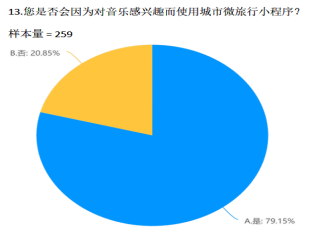
Table 1. Reliability Analysis Table 2. Questionnaire Question 12
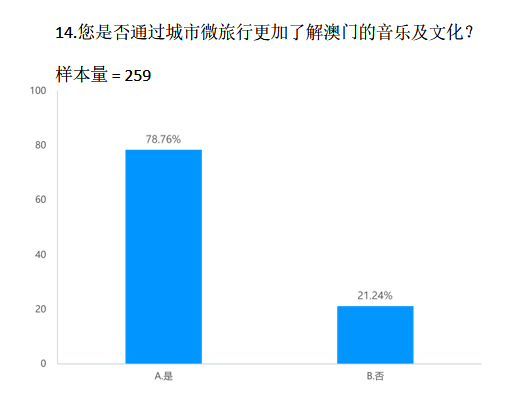

Table 3. Music Culture Introduction Table 4. Social Personal Homepage
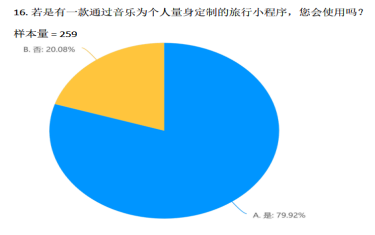
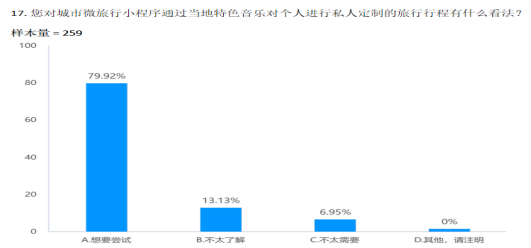
Table 5. Route Design Table 6. Social Personal Homepage
Through analyzing the responses to the core questions, the following insights can be observed: Out of 259 valid responses, 78.76% of individuals frequently listen to local music while traveling, 33 people occasionally listen, and 22 people never listen. The majority of people enjoy listening to local music during their travels, with only a small portion not interested. In the user survey for the “City Micro-Tour” app, we found that 79.15% of users use the app due to their interest in music. This indicates that music plays a significant role in attracting users to the app. However, 20.85% of users stated that their use of the app is not driven by an interest in music, suggesting that these users may be more interested in other factors such as food or attractions. This highlights the app’s diverse functionality and its appeal to different user needs. Moreover, over 78% of respondents indicated that they gained a better understanding of Macau’s music and culture through the city micro-tour, suggesting that most people are willing to engage with and explore Macau’s cultural elements in this way. This result implies that city micro-tours are a popular and effective method for experiencing Macau’s culture. Regarding the micro-tourism travel mode, 80.31% of people like it, while 19.69% do not. This shows that the micro-tourism travel mode is well-received by the majority. Additionally, 79.92% of respondents expressed interest in using a travel app customized around music, whereas 20.08% said they would not use such an app. This indicates a positive attitude towards such an app, suggesting a significant potential market. Furthermore, 79.92% of respondents are interested in trying a city micro-tour app that offers personalized travel itineraries based on local music, while 13.13% are not very familiar with it, and 6.95% do not see a need for it. Therefore, most respondents hold a positive attitude towards this travel mode, though some are either unfamiliar with or do not see a need for it.
3.2 Analysis of User Feedback on the Interactive Design of Macau Music City Micro-Tour
The survey reveals that users have shown strong interest and anticipation for this novel interactive approach. They believe that this interactive design will not only allow them to gain a deeper understanding of Macau’s music culture in a short time but also offer a more vivid experience of the city’s charm. Respondents noted that the design considers user experience by providing rich visual effects and soundscapes, along with a simple and user-friendly interface, enabling them to easily explore Macau’s music culture. Additionally, respondents expressed a desire for more community interaction features, such as online sharing, commenting, and liking, to allow them to share their experiences and discoveries in Macau with other users.
Based on this feedback, the following optimization suggestions will be implemented: First, continually refine the interface design and operational processes according to user needs to enhance the overall user experience. Second, delve deeper into Macau’s music culture, regularly updating content to meet users’ demands for in-depth cultural exploration and diversity. Finally, developers should periodically add community interaction features to enable users to better share and discuss their experiences and discoveries. Through these improvements, it is hoped that the “Macau Music City Micro-Tour” interactive design will further enhance user experience and social impact, providing valuable practical insights and reference points for the study of Macau’s music culture dissemination strategies.
4 Design Content
4.1 Design Concept
Macau is a popular travel destination, and city walk is a novel tourism method that explores the details and charm of a city in a short period with high frequency. In this study, the focus will be on using this travel method as a platform to combine Macau’s historical background and music culture, uncovering more culturally rich historical sites. The goal is to design a real-world sharing guide app related to city walks, aiming to contribute to the dissemination of Macau’s music culture and the development of Macau’s cultural tourism industry.
During use, users can open their phone cameras and location services to view real-time pictures and comments from other users’ city walks. They can also enable sharing functions with nearby users, connecting with strangers using the app. Additionally, the app will create walk routes based on users’ preferred music and other cultural interests.
4.2 Development Innovations
The design is centered around the tourist’s perspective, focusing on creating a portable and user-friendly travel app that facilitates human-computer interaction during travel. The study will integrate Macau’s music and culture with popular social media check-in concepts to develop a walk program. This program will offer users a new experience and understanding of Macau, combining tourism with culture, which represents the future trend in tourism and provides a deeper way for visitors to experience the charm of a region. The design will include a series of walk routes and activities themed around Macau’s music culture. For instance, one route will be designed around the theme “Macau Music History,” allowing users to experience Macau’s music history and culture through visits to historical buildings and live music performances. Additionally, users can better understand Macau’s music culture by unlocking maps, completing tasks, and attending local music performances, thus enhancing their travel experience.
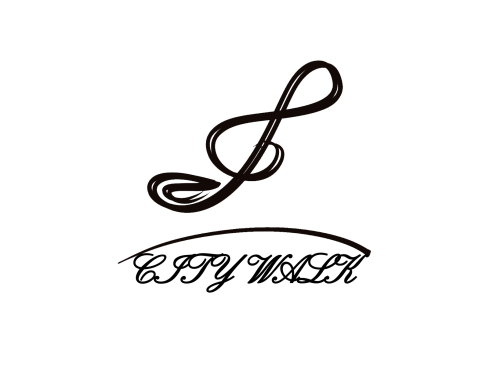
Figure 1. App Logo
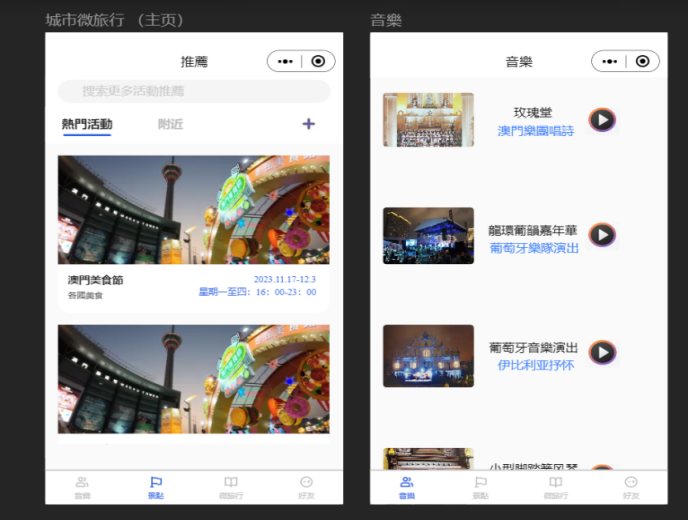
Figure 2. Home Page Figure 3. Attraction Recommendations

Figure 4. Music Culture Introduction Figure 5. Route Design
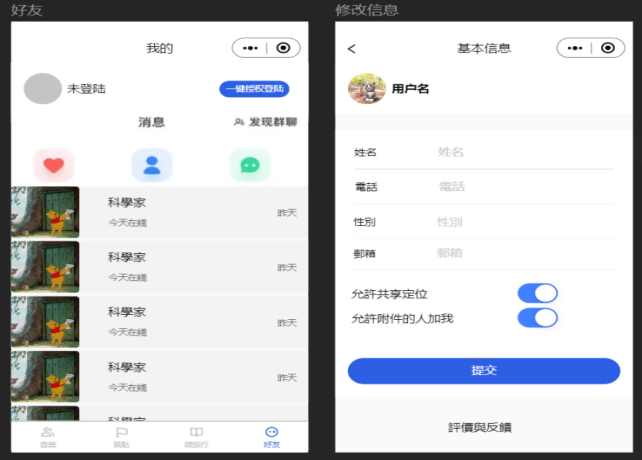
Figure 6. Social Profile Page Figure 7. Personal Introduction
4.3 App Logo Design
The app logo design is based on the treble clef symbol, tilted 45° to create an image resembling a running backpacker. The upper part of the treble clef represents the backpacker’s head, the middle section resembles the backpack, and the tail is designed with a curve that mimics the fast-running legs of an animated character. At the bottom, there is a horizon line with the text “city walk” in English, symbolizing a backpacker spreading music through the “city walk” travel method on the horizon. As designers, we see ourselves as this type of “backpacker,” using the logo to convey the app’s intention of spreading music culture through travel.
4.4 Home Page — Attraction Recommendations
The home page provides the first impression users get upon entering the app and needs to quickly showcase the app’s theme and content. Therefore, this page will feature elements such as Macau’s music attractions, distinctive foods, and historical culture. It will use high-quality images, brief text descriptions, and selected music to give users a preliminary understanding of Macau. Additionally, the page will include search boxes and navigation bars to facilitate users in finding content of interest. This interface not only provides attraction recommendations but also connects to the music interface for interaction. Users can move from the music interface to view recommendations for related attractions.
After users select music on the previous page, this page will provide recommendations for Macau’s music culture and tourist attractions related to that music. For example, recommendations might include the Ruins of St. Paul’s, A-Ma Temple, and Macau Tower. Users can learn about the historical and cultural background of these attractions, as well as the music they can hear and the cultural context they can understand. The page will use images, text, and videos to stimulate users’ travel interest and provide a comprehensive understanding of these sites. As a city known for its cuisine, Macau’s food will also be highlighted. Users will be able to discover the unique foods within 1 km of these tourist spots. The page will also provide information on the preparation methods and historical background of these dishes, as well as their connection to Macau’s culture, expanding users’ interest in both the culture and the cuisine.
4.5 Music Culture Introduction — Music Interface
Users can enter this page by selecting their preferred music. This page will provide a detailed introduction to the history, characteristics, and highlights of Macau’s music culture, as well as the related tourist attractions. Through text, images, videos, and other formats, users can gain a deeper understanding of Macau’s music while showcasing the city’s diverse cultural and artistic charm. Additionally, users can engage in interactive activities such as short quizzes to further explore Macau’s music culture.
4.6 Route Design — Walk Page
Macau, as a city of cultural fusion, offers a variety of travel routes. Users can select routes for detailed exploration based on the music they listened to on the home page and the videos they watched. On this page, users can access travel guides and practical information provided by the app, including World Heritage routes, Portuguese Cultural routes, and Mazu Historical Cultural routes. After selecting a route, users will receive corresponding transportation guides, accommodation recommendations, shopping tips, and more. This information allows users to comprehensively understand Macau’s tourism resources and obtain timely relevant information. As a city walking experience, users can also change routes at any time during their trip, making it easier to make better choices while traveling.
4.7 User Social — Friends Page
On this page, users can share their travel experiences at various tourist attractions by uploading video creations or photos and check-ins to the app, sharing their travel vlogs with other users to enhance the social functionality. Users can also share information about ongoing music events in Macau and invite others to participate. These interactions allow users to more deeply engage with Macau’s music culture and increase the app’s fun and interactivity. Regarding user feedback and reviews, there will be a feedback and review section at the bottom of the Friends Page where users can rate the app, provide suggestions, and share their Macau travel experiences and feelings. This feedback and evaluation will help understand user satisfaction and opinions, allowing continuous optimization and improvement of the app’s design and functionality.
5 Feasibility Analysis
After conducting the interaction design, this study will use the SWOT analysis method to evaluate the feasibility of the design from the perspectives of strengths, weaknesses, opportunities, and threats.
5.1 Strengths
Cultural Uniqueness: Macau is a city with a blend of Mandarin, Cantonese, Portuguese, and English, and its local culture is distinctly unique. This multicultural environment provides rich materials and inspiration for the design of the app.
Rich Musical Tradition: Macau boasts a rich musical heritage, including Portuguese guitar, folk dance music, Taoist ritual music, Nanyin (Southern Music) opera, Cantonese opera, and more. This depth of musical tradition offers ample cultural resources and insights for the “City Walk” interactive design.
Potential to Attract Tourists: Unlike traditional tourism apps, this design leverages Macau’s music culture as a backdrop and integrates the popular “City Walk” concept, which has significant potential to attract tourists of all ages. The walk interactive design focused on music can enhance tourists’ sense of participation and experience.
City Walk: Utilizing the City Walk model for travel interaction design offers a novel way to attract users through this relatively new approach to tourism.
5.2 Weaknesses
Limited Audience: The app requires some level of proficiency in using digital travel tools, which means it may only appeal to users who are enthusiastic about digital travel experiences.
High Technical Barriers: Designing and developing the “City Walk” interactive experience demands specialized technical knowledge and expertise. Although Macau’s music culture is rich, market acceptance of this new type of tourism experience still needs to be assessed.
High Funding Requirements: Designing and developing the “City Walk” interactive experience will require significant financial investment.
5.3 Opportunities
Tourism Development: Macau is actively developing its tourism industry, creating a favorable environment for the “City Walk” interactive design to flourish.
Innovative Tourism Experience: The interactive design of “City Walk” offers a novel tourism experience for Macau’s tourism sector, aiming to attract more visitors.
Digitalization Trend: With the advent of the digital era, the “City Walk” interactive design has broad development prospects.
Collaboration with Government: Developing the app requires detailed urban navigation maps. Collaborating with the Macau government to refine local map details can provide users with more convenient travel navigation.
5.4 Threats
Technical Risks: While the digital era presents significant development opportunities, it also brings technical risks. The platform’s feature of sharing nearby users necessitates a focus on program security settings and the verification of registered user data.
Market Competition: The “City Walk” interactive design may face competition from other tourism projects, requiring continuous improvement in product quality and service levels.
Policy Risks: Macau’s policy environment is relatively complex, and policy changes could impact the project.
To address these disadvantages, the design proposes implementing real-name authentication and facial recognition, promptly registering with and submitting user data for review to the police departments of both Mainland China and Macau to ensure that registrants are not engaged in illegal activities. Additionally, backend monitoring will be set up to keep track of user activity in real time, allowing for immediate response to any detected anomalies and mitigating risks accordingly.
6 Conclusion
6.1 Impact of City Walk Interactive Design on the Dissemination of Macau’s Music Culture
Based on the above design analysis, the impact of this design on the dissemination of Macau’s music culture is as follows:
Enhancing the Experience of Macau’s Music Culture: Through the interactive design, Macau’s musical elements are integrated into various corners of the city, allowing visitors to experience Macau’s music culture anytime and anywhere during their exploration of the city. This comprehensive experience enhances visitors’ understanding and appreciation of Macau’s music culture.
Promoting Innovation in Macau’s Music Culture Industry: The “City Walk” interactive design merges elements of Macau’s music, tourism, and culture to create music tourism products with unique Macau characteristics. This not only drives innovative development in Macau’s music industry but also injects new vitality into the local tourism industry.
Elevating Macau’s Cultural Brand Image: By spreading Macau’s music culture to a broader visitor audience through the “City Walk” interactive design, the brand image of Macau as a cultural city can be enhanced. This is significant for the future development of Macau’s tourism industry and the improvement of the city’s image.
Providing a New Approach to Music Culture Dissemination: The “City Walk” interactive design offers new channels and methods for disseminating Macau’s music culture. Through thoughtfully designed interactive methods, visitors can actively explore, understand, and share Macau’s music culture, leading to spontaneous word-of-mouth promotion.
In summary, integrating Macau’s music culture into the innovative “City Walk” tourism format offers new ideas and methods for cultural dissemination. This design effectively promotes Macau’s music culture, enhances visitor experience, improves dissemination effectiveness, and facilitates cultural exchange. Future exploration could further innovate interactive methods using technologies such as virtual reality and augmented reality, enhancing the dissemination effect and creating more distinctive and attractive music walk products. This would provide visitors with a richer and deeper music cultural experience. Thus, this design significantly enhances Macau’s cultural influence, opens broader development spaces for Macau’s music industry, and promotes the development of Macau’s music and tourism industries.
6.2 Insights into Promoting the Development of Macau’s Cultural Tourism Industry
This design not only provides tourists with opportunities to deeply experience Macau’s music culture but also offers new ideas and methods for its dissemination. The “City Walk” concept injects new vitality into Macau’s tourism industry and provides fresh perspectives for the development of Macau’s cultural tourism sector. Specific insights include:
Promoting the Protection and Inheritance of Macau’s Music Culture: The new tourism approach of “City Walk” facilitates better protection and preservation of local music culture, providing momentum for the sustainable development of Macau’s cultural tourism industry.
Enhancing Dissemination of Macau’s Music Culture: By using the walk approach, the dissemination of Macau’s music culture is broadened, increasing its impact and competitiveness in Macau’s cultural tourism industry.
Improving Macau’s Cultural Tourism Experience: Interactive design offers more personalized and convenient tourism services, improving the overall experience and satisfaction of visitors in Macau.
Integrating Macau’s Cultural Tourism Resources: Collaboration with various tourism sites in Macau enables resource sharing and complementary advantages, providing a more comprehensive cultural tourism service to visitors.
Exploring New Business Models: The “City Walk” interactive design represents a novel tourism model, aiming to provide new ideas and methods for the transformation and upgrading of Macau’s cultural tourism industry.
In summary, the “City Walk” interactive experience design has promoted the development of Macau’s cultural tourism industry. By integrating Macau’s music culture into the travel experience through city walk, it not only enhances the dissemination of Macau’s music culture, allowing users to gain a deeper understanding and experience of it, but also provides new opportunities for its promotion, thereby enhancing the competitiveness of Macau’s tourism. This approach can also integrate cultural and tourism resources, explore new business models, and offer new ideas and methods for the transformation and upgrading of Macau’s cultural tourism industry. It allows Macau’s music culture to be more deeply showcased and spread, helping to propel it onto the global stage. Moreover, this design can attract more tourists, thus promoting Macau’s economic development. In the future, the design aims to explore and innovate more dissemination strategies and methods through scenario creation, interactive element design, and the application of digital tools. Additionally, this design has a certain universality and replicability, making it a valuable reference and inspiration for the development of cultural tourism industries in other cities.
References
[1]. Wang, X. X. (2020). Overview of Macau music research on the 20th anniversary of its return. Yuefu Xinsheng (Journal of Shenyang Conservatory of Music), 38(01), 110-115.
[2]. Dai, D. C. (2022). Research on Macau urban music culture (2nd ed.). Shanghai Conservatory of Music Press, 2.
[3]. Liu, S. P. (2018). Overview of domestic music tourism research and development. Tourism Overview (Second Half Month), (12), 35-36.
[4]. Guo, H., & Peng, K. J. (2021). Knowledge map analysis of the development of music tourism in China from 1984 to 2019—Based on CiteSpace visualization analysis. Market Forum, (01), 38-45.
[5]. Liang, X. B. (2023). The tourism boom sparked by citywalk. Xiaokang, (30), 72.
[6]. Gao, Y. (2023). Citywalk boom: How brands can leverage marketing. International Brand Observation, (17), 22-24.
[7]. Zhou, Y. D., & Chen, H. Q. (2014). Systematic development issues of Lijiang cultural tourism products under service design concepts. Design Arts Research, 4(02), 6-10.
[8]. Xie, J. (2020). Research on the interactive design of tourist attraction guidance systems. Juye, (02), 50+52.
[9]. Yuan, J. (2021). Analysis and key points of interaction design for tourism apps. Science and Technology Vision, (30), 68-70.
Cite this article
Huang,J.;Huang,R. (2024). Study on the Communication Strategy of Macao Music Culture——Taking the Interaction Design of “City Walk” as an Example. Advances in Humanities Research,7,27-36.
Data availability
The datasets used and/or analyzed during the current study will be available from the authors upon reasonable request.
Disclaimer/Publisher's Note
The statements, opinions and data contained in all publications are solely those of the individual author(s) and contributor(s) and not of EWA Publishing and/or the editor(s). EWA Publishing and/or the editor(s) disclaim responsibility for any injury to people or property resulting from any ideas, methods, instructions or products referred to in the content.
About volume
Journal:Advances in Humanities Research
© 2024 by the author(s). Licensee EWA Publishing, Oxford, UK. This article is an open access article distributed under the terms and
conditions of the Creative Commons Attribution (CC BY) license. Authors who
publish this series agree to the following terms:
1. Authors retain copyright and grant the series right of first publication with the work simultaneously licensed under a Creative Commons
Attribution License that allows others to share the work with an acknowledgment of the work's authorship and initial publication in this
series.
2. Authors are able to enter into separate, additional contractual arrangements for the non-exclusive distribution of the series's published
version of the work (e.g., post it to an institutional repository or publish it in a book), with an acknowledgment of its initial
publication in this series.
3. Authors are permitted and encouraged to post their work online (e.g., in institutional repositories or on their website) prior to and
during the submission process, as it can lead to productive exchanges, as well as earlier and greater citation of published work (See
Open access policy for details).
References
[1]. Wang, X. X. (2020). Overview of Macau music research on the 20th anniversary of its return. Yuefu Xinsheng (Journal of Shenyang Conservatory of Music), 38(01), 110-115.
[2]. Dai, D. C. (2022). Research on Macau urban music culture (2nd ed.). Shanghai Conservatory of Music Press, 2.
[3]. Liu, S. P. (2018). Overview of domestic music tourism research and development. Tourism Overview (Second Half Month), (12), 35-36.
[4]. Guo, H., & Peng, K. J. (2021). Knowledge map analysis of the development of music tourism in China from 1984 to 2019—Based on CiteSpace visualization analysis. Market Forum, (01), 38-45.
[5]. Liang, X. B. (2023). The tourism boom sparked by citywalk. Xiaokang, (30), 72.
[6]. Gao, Y. (2023). Citywalk boom: How brands can leverage marketing. International Brand Observation, (17), 22-24.
[7]. Zhou, Y. D., & Chen, H. Q. (2014). Systematic development issues of Lijiang cultural tourism products under service design concepts. Design Arts Research, 4(02), 6-10.
[8]. Xie, J. (2020). Research on the interactive design of tourist attraction guidance systems. Juye, (02), 50+52.
[9]. Yuan, J. (2021). Analysis and key points of interaction design for tourism apps. Science and Technology Vision, (30), 68-70.





